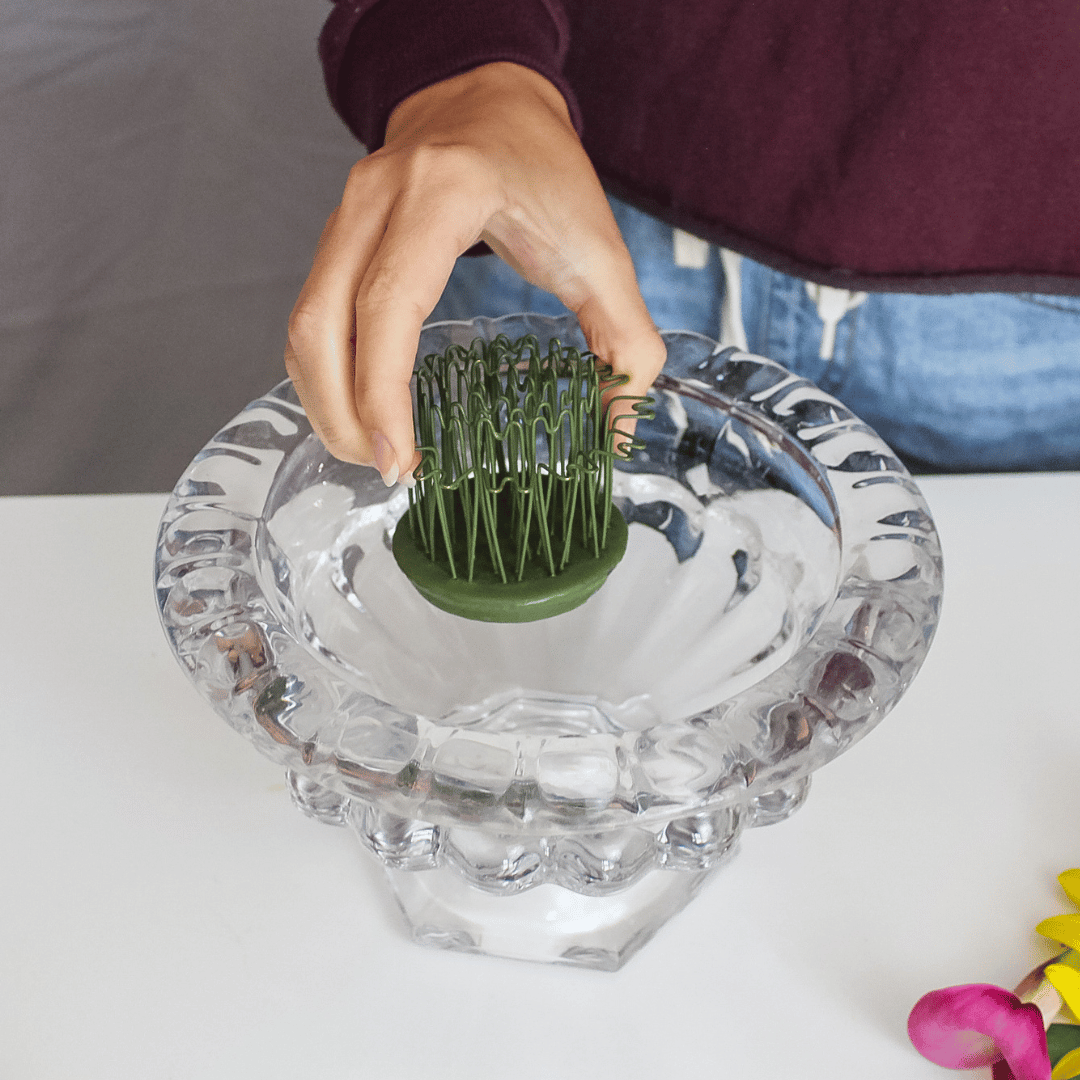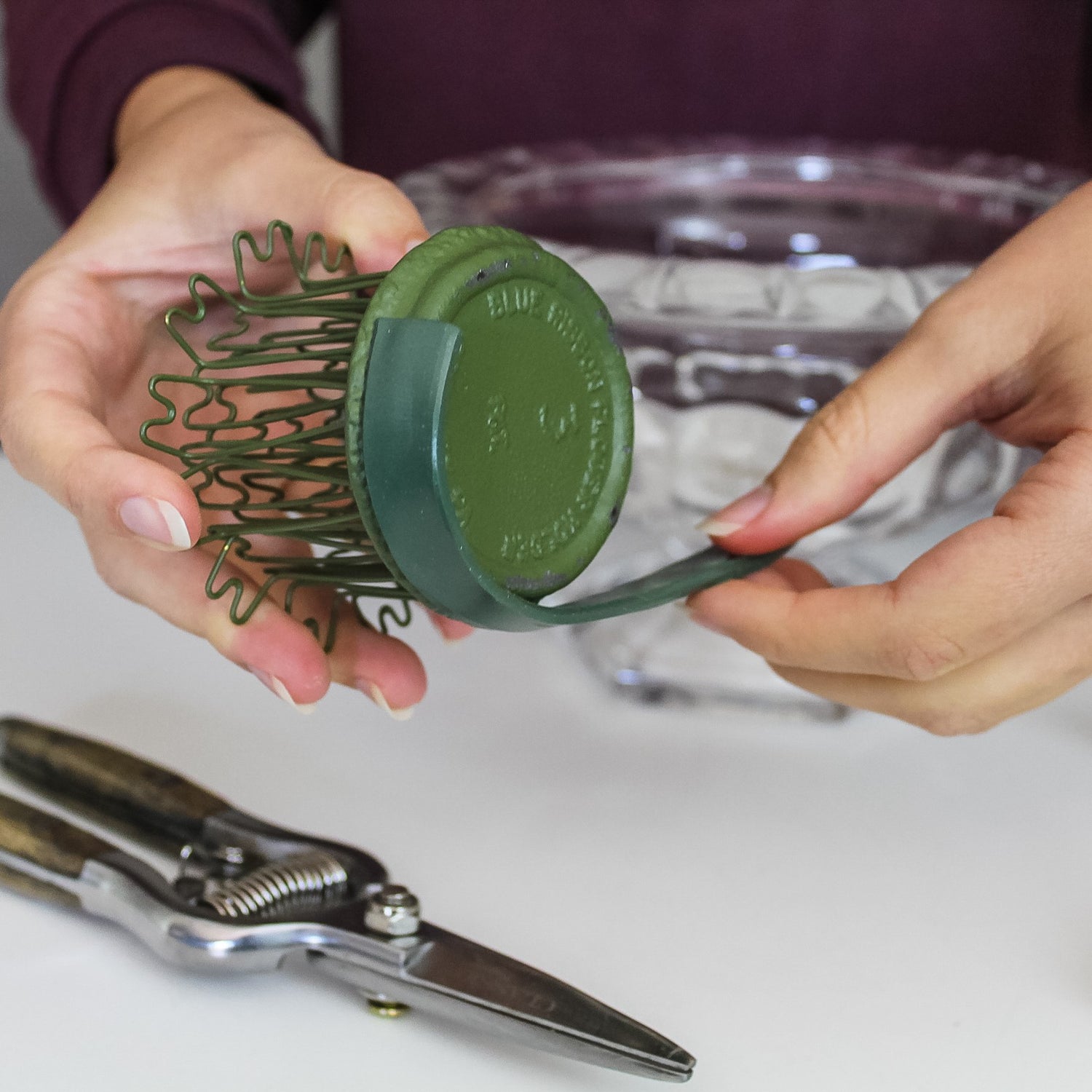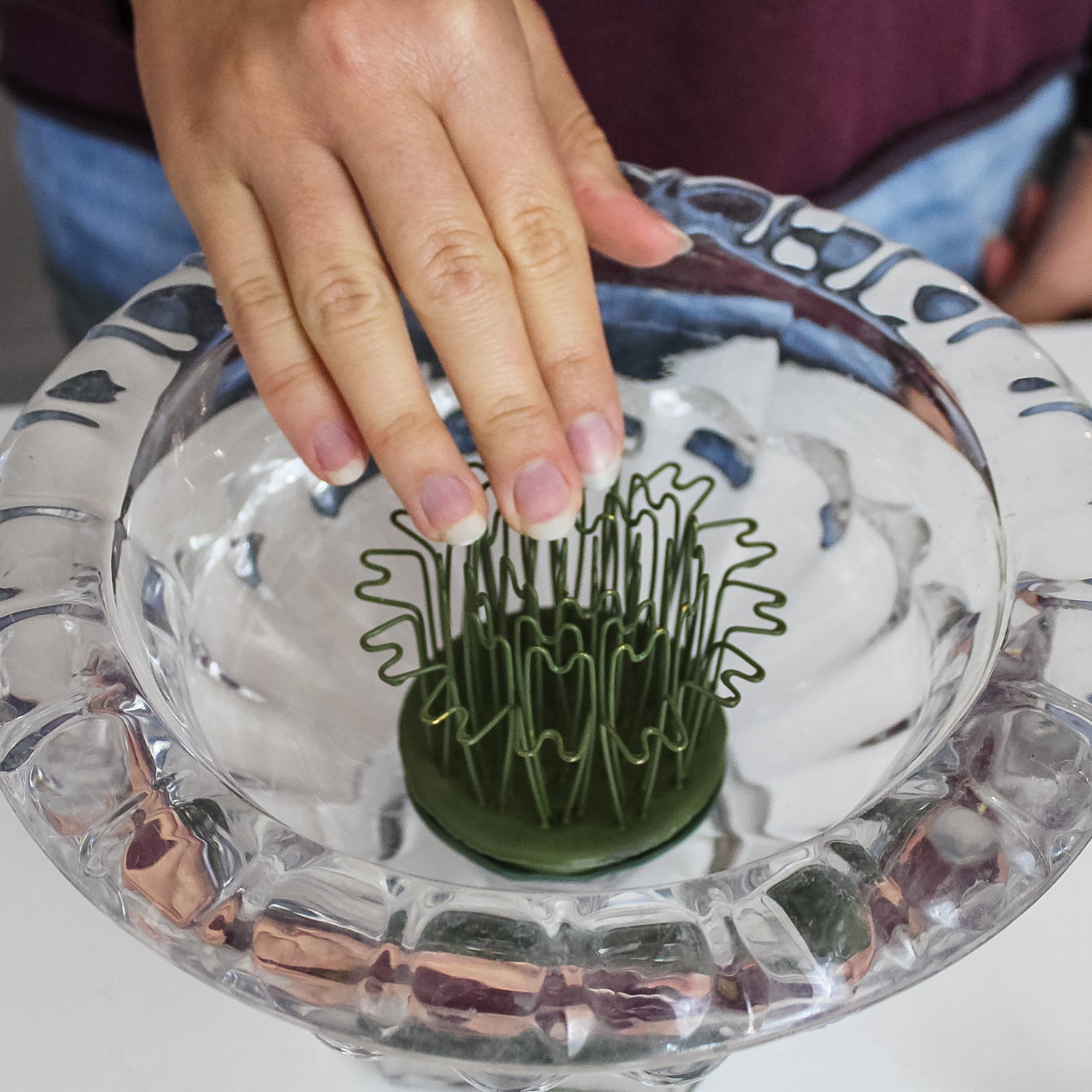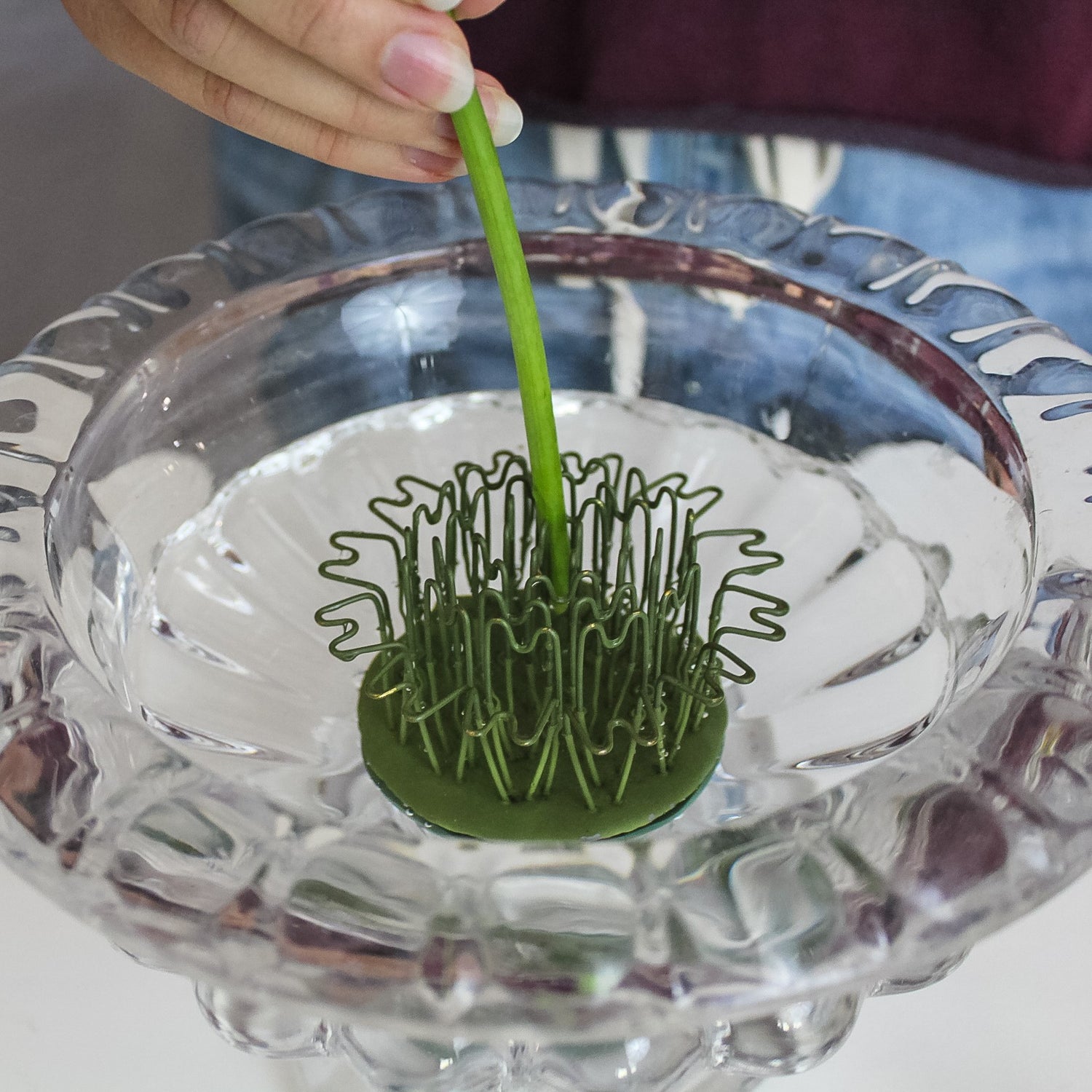How to Use a Hairpin Holder
It's actually effortless.
The Hairpin Holder is a favorite becuase it's incredibly beginner friendly, making it easy to create stunning arrangements without the need for floral foam. Featuring looped metal pins instead of sharp spikes, these holders gently cradle both delicate stems and thick branches, offering secure support without damage. Their open design allows stems to be inserted at virtually any angle, making them perfect for creating dynamic, natural-looking compositions. In addition to your favorite flowers, the Hairpin holders are well-suited for use with silk or dried flowers, as their flexible structure grips stems securely without piercing or splitting.
Be warned: the hairpin holders are wildly addictive!

1. Choose a vase
The hairpin flower holders allow you to design in any vase that holds water! Choose your favorite container that the frog will easily fit into. You'd be surprised at how many stems the hairpin flower holders can handle, so don't worry if it's not a perfect fit.

2. Prepare your hairpin holder
Place a strip of floral putty along the outside edge of the bottom of the hairpin flower holder. While floral putty isn't required, it will keep the flower frog in place while you design and when the arrangement is moved.
Protip: be sure your vase is clean and very dry to ensure you get a water-tight seal with the putty.

3. Place your hairpin and add water
Strongly press your flower frog into the bottom of the vase. You should be able to turn your vase upside down and the frog will remain in place.
Once your frog is secured, add water. You'll want to add enough that all of your cut stems are in the water, but you can top if off with more once you're done designing.

4. Make magic
Place the flower stems in between the looped pins. The hairpin holder is much like a sophisticated version of chicken wire and provides a "thatched" base to design into. The stems can fit between the pins, or within the loops of the pins for a strong hold.
Start with larger stemmed blooms to build tighter thatching that will hold smaller stems.
For more tips, read our Mindful Mechanics blog!
View all-

How to Clean Your Kenzan Flower Frogs
Keeping your kenzan (a.k.a. flower frog) in great shape is the secret to long-lasting, sustainable design. With just a little TLC, your frogs will stay sturdy, clean, and ready for...
How to Clean Your Kenzan Flower Frogs
Keeping your kenzan (a.k.a. flower frog) in great shape is the secret to long-lasting, sustainable design. With just a little TLC, your frogs will stay sturdy, clean, and ready for...
-

The Art of Ikebana: A Journey Through Japan’s T...
Ikebana, often described as the Japanese art of flower arranging, is much more than simply placing flowers in a vase. Rooted in centuries of tradition, ikebana is a meditative practice...
The Art of Ikebana: A Journey Through Japan’s T...
Ikebana, often described as the Japanese art of flower arranging, is much more than simply placing flowers in a vase. Rooted in centuries of tradition, ikebana is a meditative practice...
-

How to Use a Kenzan: A Beginner’s Guide to Pin ...
Whether you’re drawn to the meditative art of ikebana or simply want your flower arrangements to look more natural and sculptural, the kenzan—also known as a pin frog or pin...
How to Use a Kenzan: A Beginner’s Guide to Pin ...
Whether you’re drawn to the meditative art of ikebana or simply want your flower arrangements to look more natural and sculptural, the kenzan—also known as a pin frog or pin...



